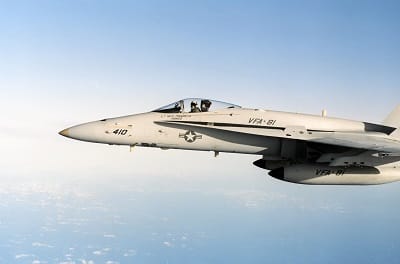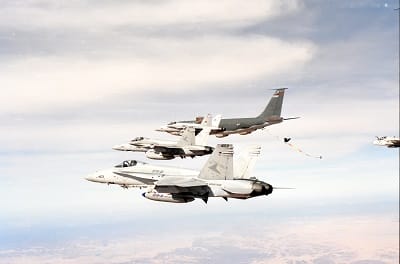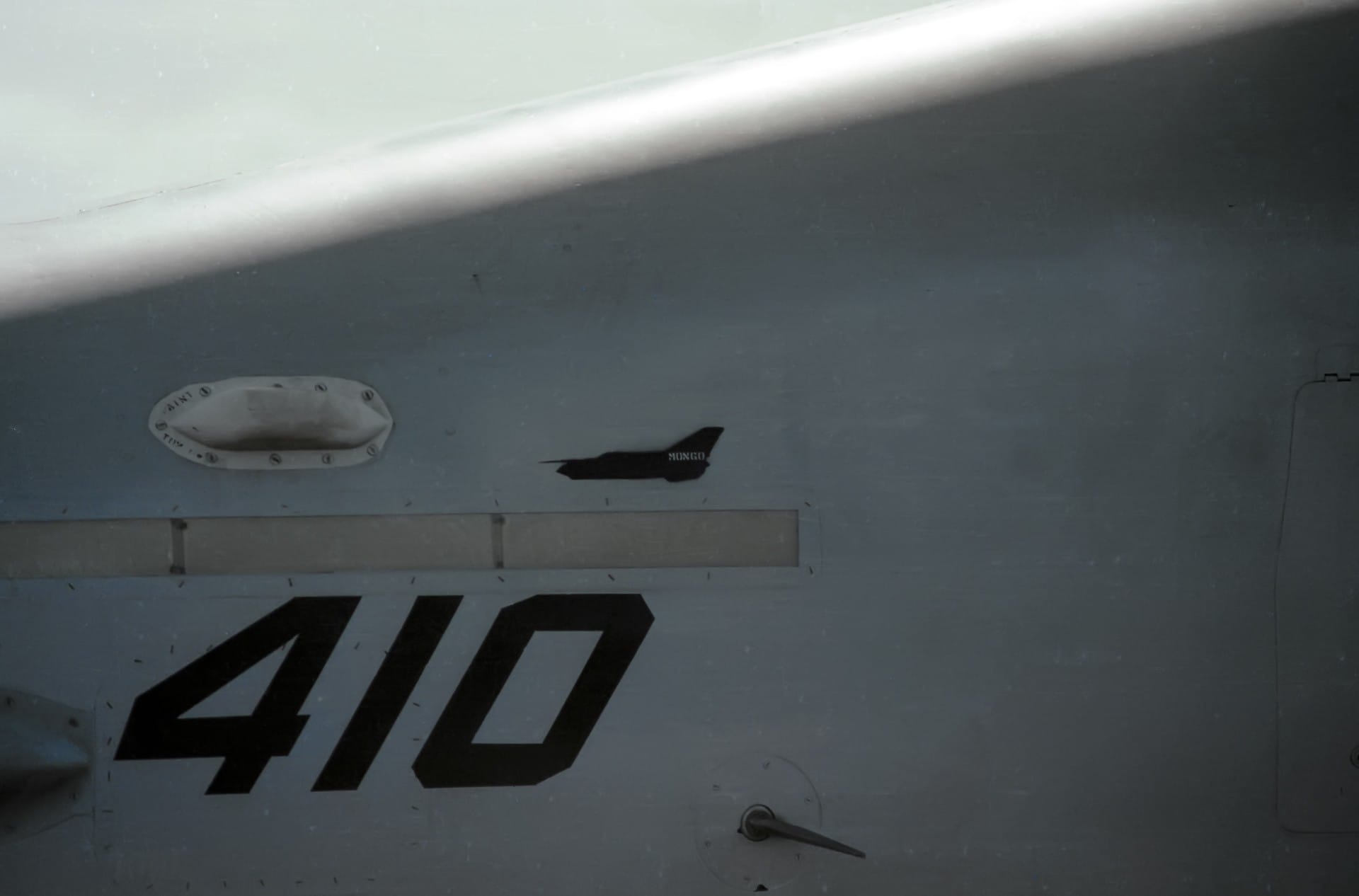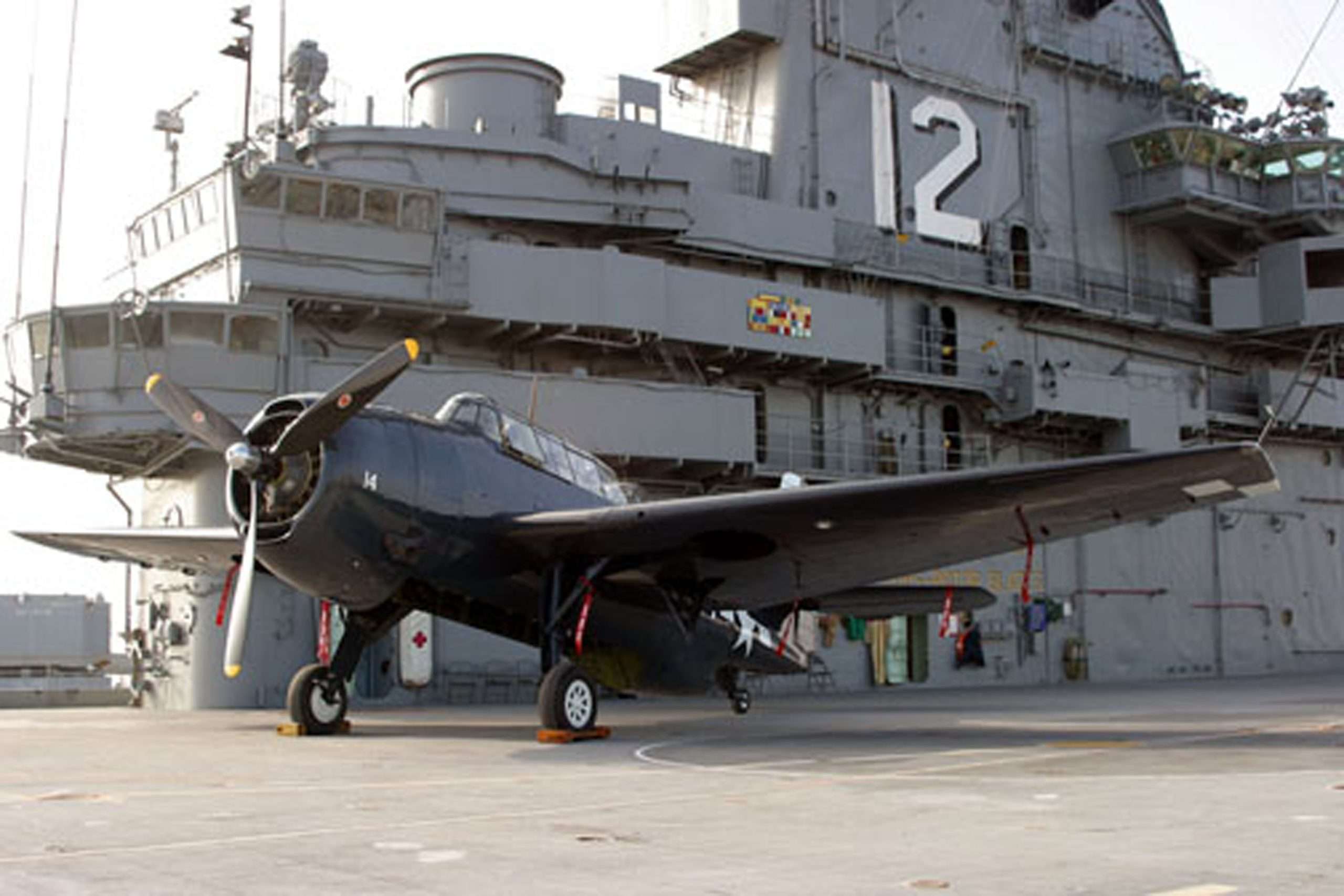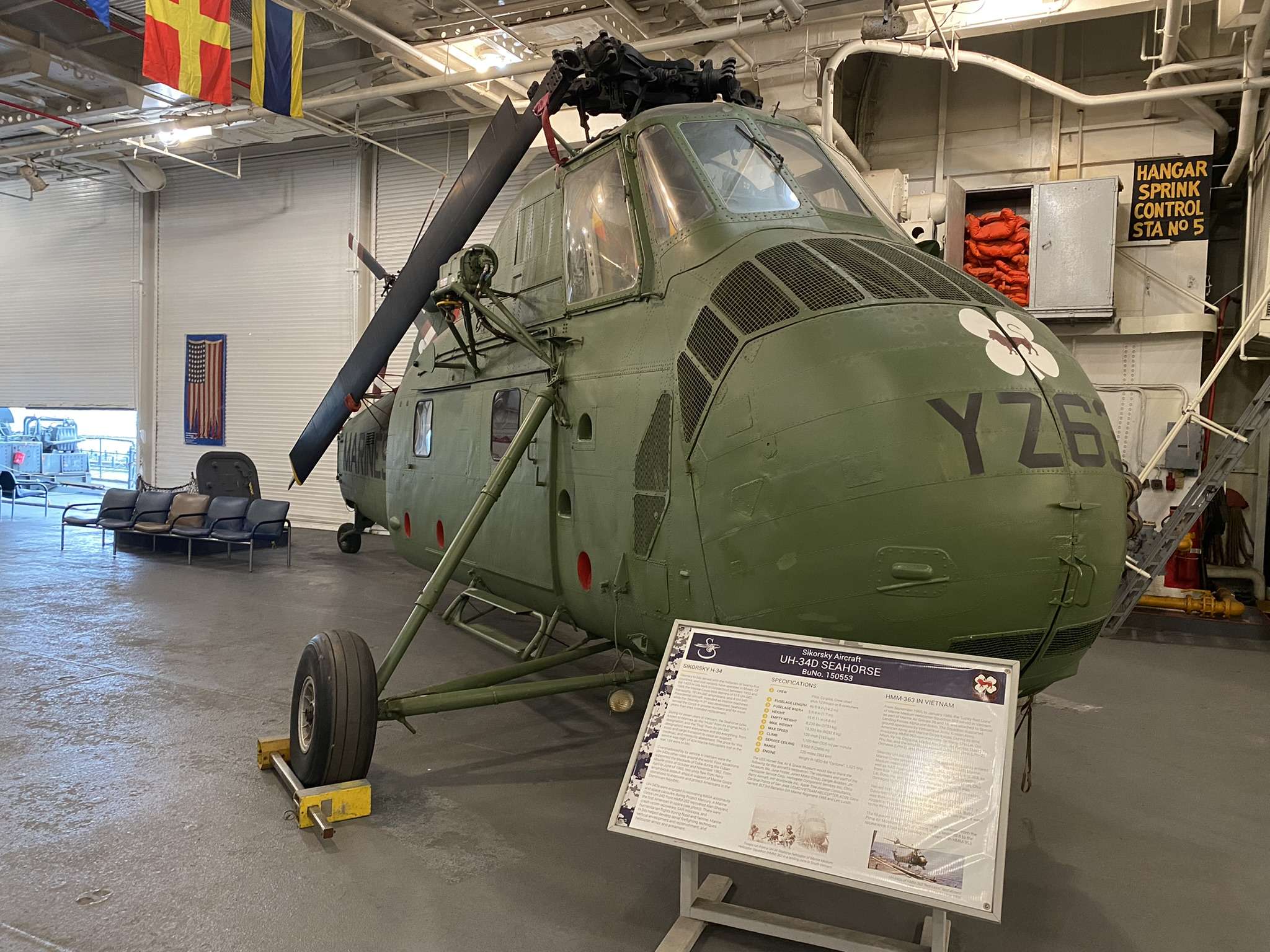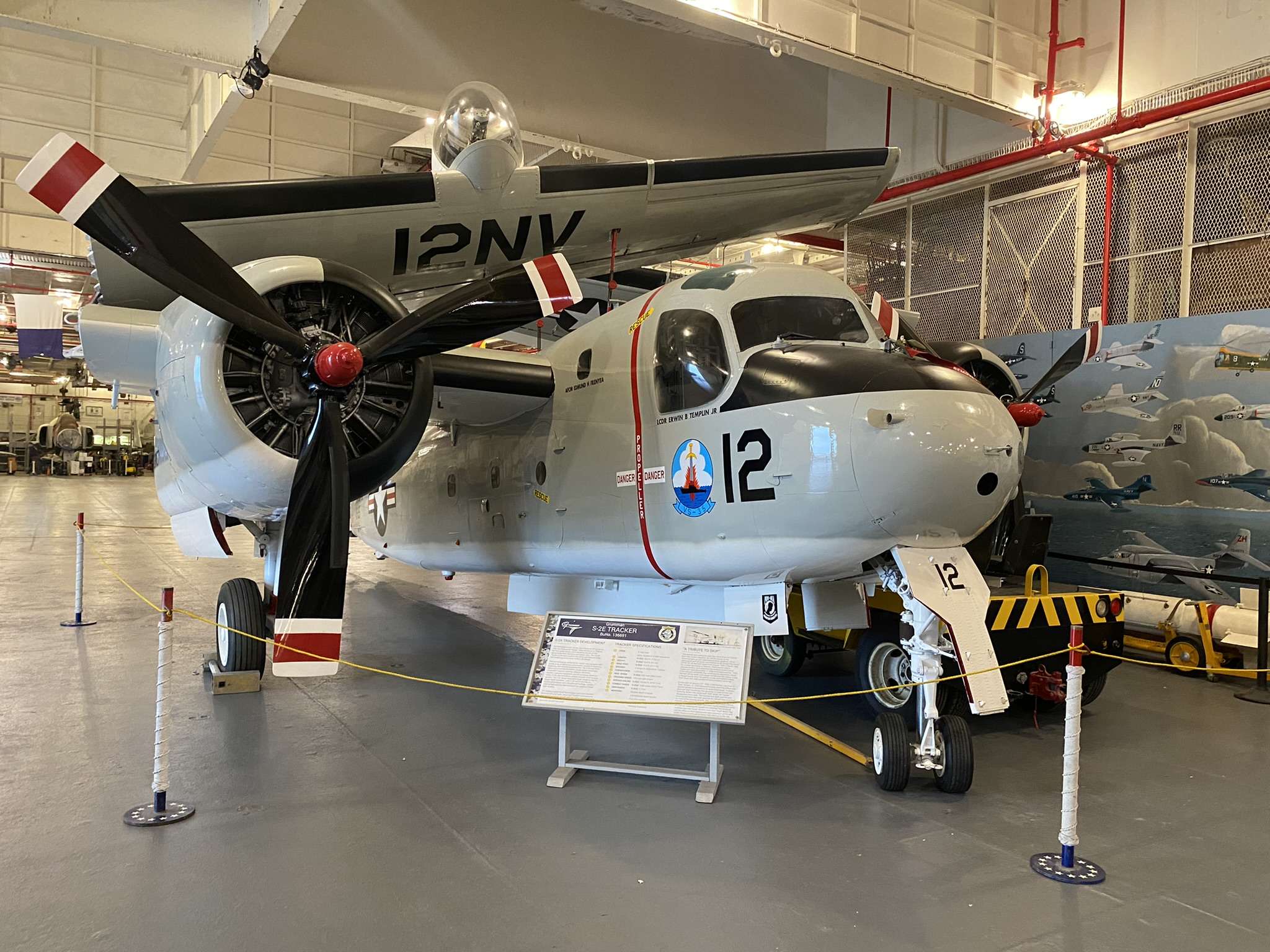F/A-18C Hornet: Bu No 163502
L2025.001.001, on loan from the National Naval Aviation Museum
Information
Adopted by the Navy in 1984, the F/A-18 Hornet is one of the most successful designs in the history of naval aviation.
It replaced the F-4 Phantom and F-14 Tomcat as an air-to-air “fighter” and the A-6 Intruder and A-7 Corsair in the air-to-ground “attack” role.
The Hornet was built to be versatile, flexible and maneuverable, especially at low speeds.
Variations of the Hornet filled many different roles:
- B models were used for training
- A, C and D models performed attack, air control and reconnaissance missions
A and C versions are single-seat aircraft, while the B and D are two-seaters.
The Navy retired the F/A-18C in 2018, but its descendant—the F/A-18E/F Super Hornet—is still in use today.
This Aircraft
This aircraft is one of two F/A-18C Hornets assigned to the VFA-81 Sunliners that shot down a pair of Iraqi MiG-21 Fishbeds on the first day of Operation Desert Storm on January 17, 1991.
“All my thoughts were now directed toward my target. Every switch was set. I was ready,” recalled CAPT Nick “Mongo” Mongillo, USN (Ret.) of that day’s mission flying this aircraft as a young lieutenant. “Seconds later, the E-2 [Hawkeye] alerted us to bandits on the nose at 15 miles. A shudder went through my body as I selected the air-to-air master mode of my Hornet.”
He peered outside his cockpit seeking a visual on the approaching enemy airplanes. Locking on the trailing MiG-21, he fired an AIM-7 missile.
“The Sparrow pulled to the right as soon as it came off the rail-so much that I thought the missile had gone stupid. It became obvious that the missile was working fine when it guided to a spectacular direct hit on the Fishbed, causing it to disintegrate in a sheet of yellow flame.”
Specifications
Primary Function: Multi-role attack and fighter aircraft.
Contractor: McDonnell Douglas; Major Subcontractor: Northrop.
Date Deployed: November 1978. Operational – October 1983 (A/B models); September 1987 (C/D models).
Unit Cost: $29 Million
Length: 56 feet (16.8 meters)
Wing Span: 40 feet 5 inches (13.5 meters)
Height: 15 feet 4 inches (4.6 meters)
Maximum Takeoff Weight: 51,900 pounds (23,537 kg)
Maximum Level Speed: Mach 1.7+
Ceiling: 50,000+ feet
Range: Combat: 1,089 nautical miles (1252.4 miles/2,003 km), clean plus two AIM-9s
Ferry: 1,546 nautical miles (1777.9 miles/2,844 km), two AIM-9s plus three 330 gallon tanks.
Propulsion: Two F404-GE-402 enhanced performance turbofan engines. 17,700 pounds static thrust per engine.
Crew: A, C and E models: One. B, D and F models: Two
Armament: One M61A1/A2 Vulcan 20mm cannon; AIM 9 Sidewinder, AIM 7 Sparrow, AIM-120 AMRAAM, Harpoon, Harm, SLAM, SLAM-ER, Maverick missiles; Joint Stand-Off Weapon (JSOW); Joint Direct Attack Munition (JDAM); various general purpose bombs, mines and rockets.
The first deployed Hornets were sent to USS Constellation (CV-64) in 1985.
Production of C and D models ended in 2000, with the last delivery of an F/A-18D to the U.S. Marine Corps occurring in the summer of the same year.
The Move Acknowledgements
This aircraft has been on the acquisition list for the museum since its first opening in 1998. We are very grateful to the museum’s stakeholders, donors, and crew for getting a Hornet on Hornet in April 2025.
Special thanks to all the ACE Campaign donors that funded the F/A-18C Hornet delivery.
Special Thanks to Don Tabb and Conway Jones, who were vital parts of the planning process back in early 2024. They contacted Travis Air Force to start the plan to have a C-5 Galaxy fly the Hornet from Pensacola, FL to Oakland, CA. Mr. Tabb is also a major donor for the ACE Campaign.
Thanks to Travis Airforce Base for their time during the planning process, specialized personnel and equipment, and crucially the C-5 Galaxy aircraft.
Thanks to KaiserAir, Inc. for hangar space to store the F/A-18C and coordination for the C-5 Galaxy landing Oakland Airport.
Thanks to Worldwide Aircraft Recovery, Ltd for their time and expertise to disassemble, assemble, and transport the F/A-18C Hornet in Pensacola, FL and Oakland Airport to the Museum.
Videos of interest on the F/A-18C:

